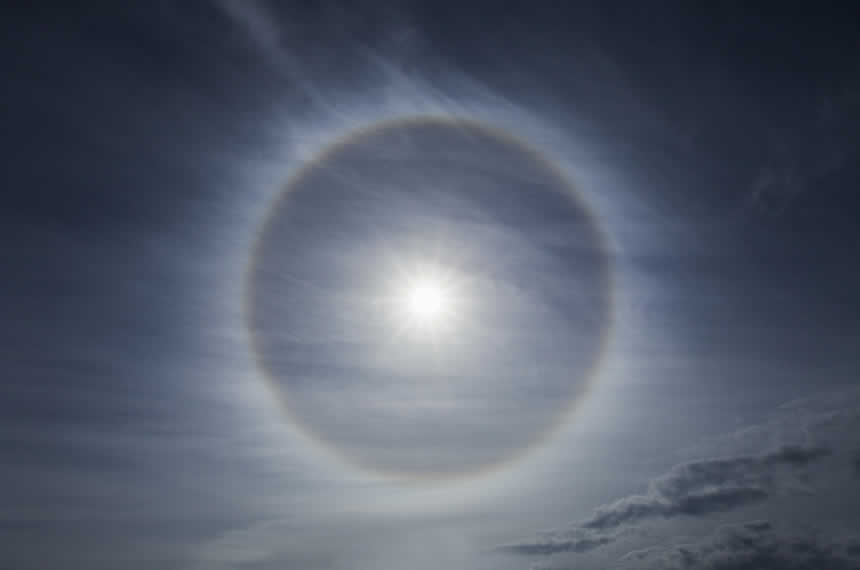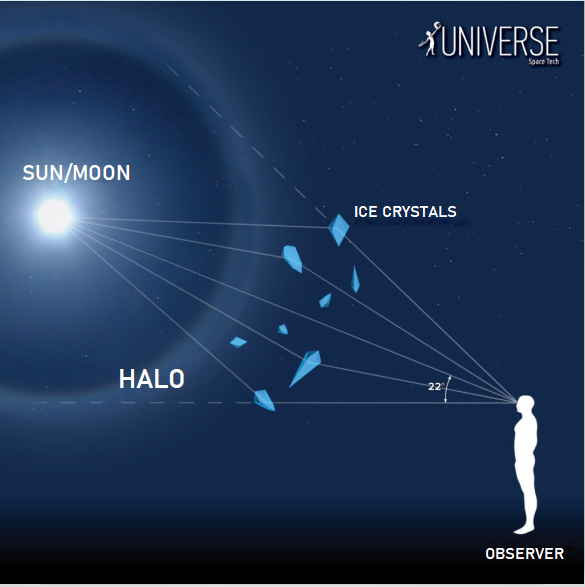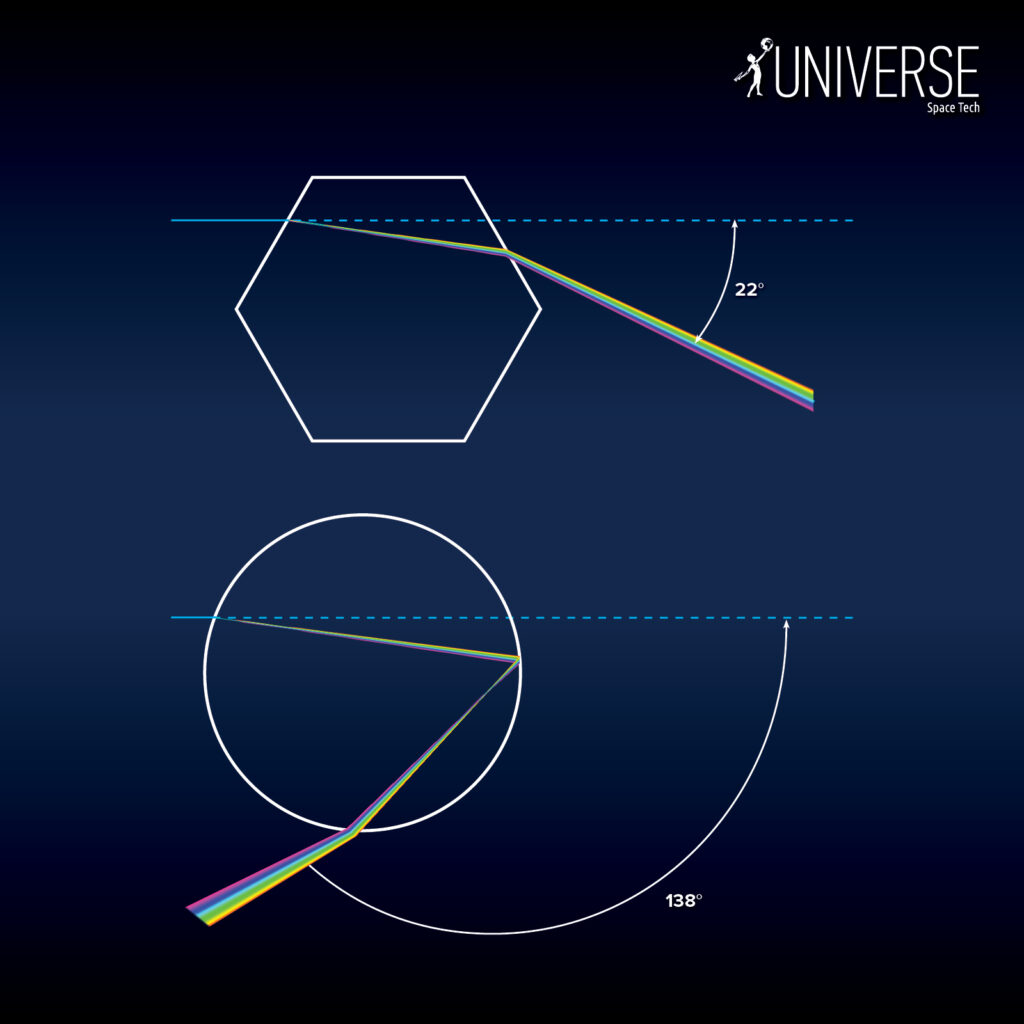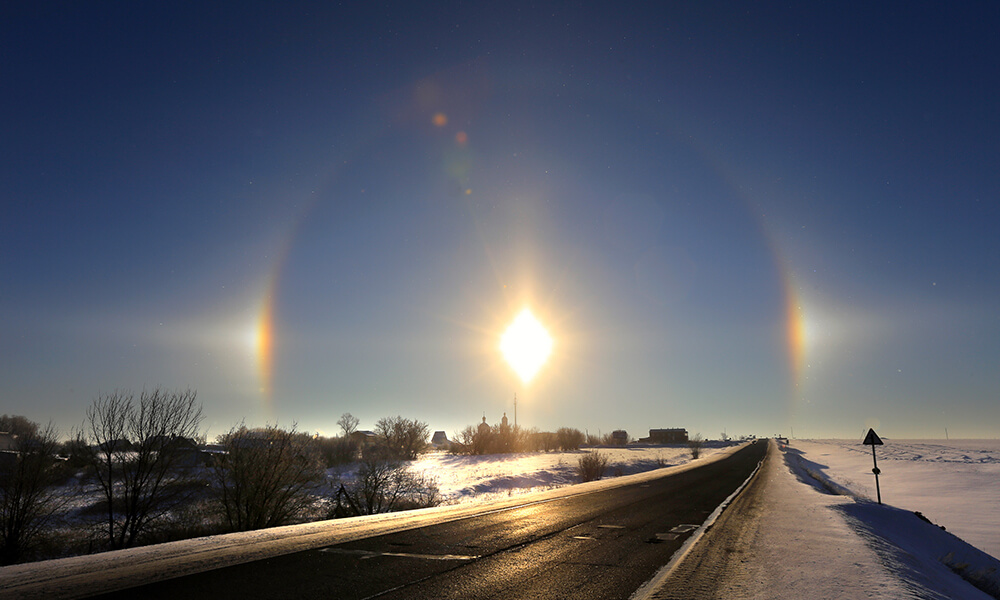All of us have seen a rainbow at least once in our life — a beautiful colored optical phenomenon that occurs as a result of the refraction of sunlight in water droplets. We associate it with spring or summer rains. It is almost impossible to see a rainbow in the cold season. But there is another atmospheric phenomenon of a similar nature, which is often visible in winter, and it is associated not only with the Sun, but also with the Moon. This phenomenon is called a “halo”.

The main difference between a rainbow and a halo is that drops of liquid water are “responsible” for the formation of the first, and the second appears due to crystals of water ice. They usually have the shape of a hexagonal prism. A light ray falling on one of the faces, is refracted, it passes through the prism, refracts again and exits it, deviating from the original direction by 22°.
Since the rays coming to us from the Sun or Moon can be considered parallel, and the ice crystals in the air are randomly oriented, each of them forms an additional “ray”, deflected by 22° from the direction of the light source. The totality of such rays coming to us from a multitude of randomly rotated pieces of ice looks to the observer like a circle, in the center of which is our day or night luminary.

In the case of a halo around the Sun, we can notice that the inner edge of the light ring has a red hue, and the outer one is blue. These are manifestations of ordinary dispersion, that is, unequal refraction of light with different wavelengths (different colors). Due to the same phenomenon, we see the colors of the rainbow. The difference is, firstly, the angle of refraction of rays in water droplets is much larger — that is why we observe a rainbow in the part of the sky opposite the Sun, while the halo is not far from it. Secondly, the surface of the droplets can be considered perfectly clean, and the shape is very close to spherical. At the same time, the faces of ice crystals often have microscopic defects that lead to an increase in light scattering and “blurring” of colors. For the same reason, the width of the halo ring noticeably exceeds the apparent diameter of the solar and lunar disks.

In order to see the halo around the Moon, it is necessary that the Moon itself is present in the sky in a sufficiently large phase. This happens quite often. According to meteorologists, at each point of the land, the halo is observed about twice a week: the first — solar, the second — lunar. Therefore, it would be wrong to call this phenomenon “rare”.
Despite the fact that the “Celestial circle” is formed on ice crystals, it is often visible in summer. At high altitudes, the air temperature is always below zero Celsius, and water is present there exclusively in solid form. When a sufficiently large field of translucent cirrus clouds appears in the sky over a certain area, in which the Sun shines through, a halo will almost certainly appear there.

Finally, it is worth adding that the ice crystals responsible for the appearance of the halo may have a more complex shape. It happens that most of them “hang” in the air in almost the same position. Then we see the Sun or Moon rays reflected from them, no as a ring, but other strange figures. For example, a vertical “pillar of fire” appears above the Sun, which is low above the horizon. In some cases, a light band is formed parallel to the horizon. At the intersection of such a band with the “usual” circular halo, “fake suns”, parhelion, are observed.

